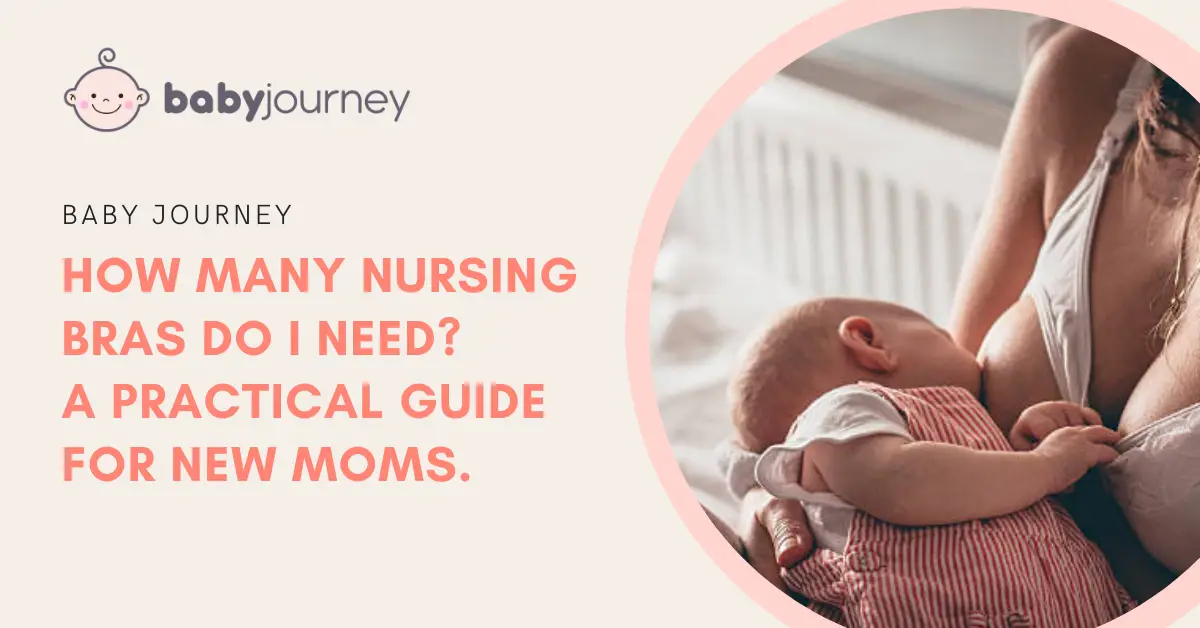When it comes to nursing bras, many new moms wonder how many they actually need. While the answer may vary depending on personal preference and lifestyle, there are a few general guidelines to consider. Most experts recommend having at least three nursing bras, but there are a few factors to keep in mind when deciding how many to purchase.
One important factor is how often you plan on doing laundry. Since nursing bras need to be washed frequently, it’s a good idea to have a few extra on hand so that you always have a clean one available. Additionally, if you plan on returning to work or leaving the house frequently, you may want to have a few extra nursing bras on hand to make sure you always have one available when you need it.
Another consideration is the type of nursing bra you prefer. Some women prefer to wear nursing bras exclusively, while others prefer to wear regular bras with nursing pads. If you prefer the latter option, you may not need as many nursing bras since you can simply switch out the nursing pads as needed. Ultimately, the number of nursing bras you need will depend on your personal preferences and lifestyle.
Understanding Nursing Bras
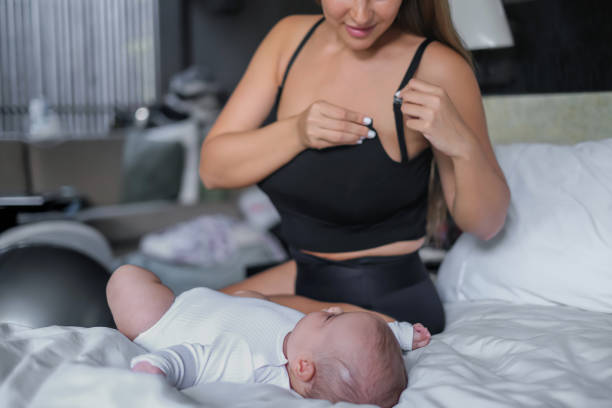
Nursing bras are specially designed bras for breastfeeding mothers. They offer comfort and support while making it easy to breastfeed your baby. If you’re pregnant or have just given birth, you may be wondering how many nursing bras you need. Here’s what you need to know.
Styles of Nursing Bras
There are several styles of nursing bras available, including:
- Soft and seamless nursing bras
- Underwire nursing bras
- Nursing sports bras
- Wireless nursing bras
- Bralettes
- Structured nursing bras
- Seamless clip-down nursing bras
The best nursing bra for you will depend on your personal preferences and needs.
Comfort and Support
Comfort is key when it comes to nursing bras. Look for bras with stretchy, soft cups and a band that fits snugly but not too tightly. A nursing bra with a rib knit band can provide extra support and comfort.
When it comes to support, some nursing bras have an underwire while others are wireless. Underwire nursing bras can provide more support, but some women find them uncomfortable. Wireless nursing bras are more comfortable but may not offer as much support.
Clip-Down or Clasp
Most nursing bras have a clip-down or clasp feature that allows you to easily breastfeed your baby. Some women prefer a clip-down nursing bra because it’s easier to use with one hand. Others prefer a clasp because it provides more support.
Finding the Right Size
It’s important to find the right size nursing bra to ensure comfort and support. Use a size chart to determine your band size and cup size. Keep in mind that your breast size may change throughout your breastfeeding journey, so it’s a good idea to get measured periodically.
How Many Nursing Bras Do You Need?
At least two nursing bras are likely necessary so that you can wear one while the other is being washed. Nursing bras are readily contaminated by breast milk leaks, perspiration, or your child’s spit-up and drool. For convenience, some women choose having more than two nursing bras.
Overall, the number of nursing bras you need will depend on your personal preferences and needs. It’s a good idea to try out a few different styles to see what works best for you.
Determining the Number of Nursing Bras Needed
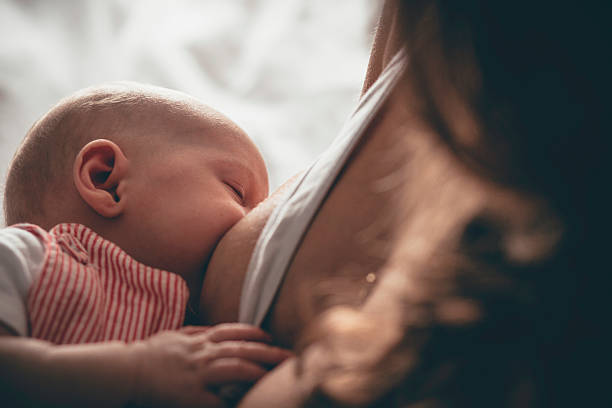
When it comes to determining the number of nursing bras needed, there are several factors to consider. While the recommended minimum is three nursing bras, this number may vary depending on individual needs and preferences.
One important factor to consider is the frequency of laundry. Since nursing bras can get covered in milk during nursing and pumping sessions, it may be necessary to have more than three bras if doing laundry every day is not feasible. Additionally, if leaks are a common occurrence, having a spare nursing bra on hand can be helpful.
Another consideration is the type of nursing bra. If using a hands-free or wearable breast pump, it may be necessary to have a specific type of nursing bra that accommodates the pump. It is also important to ensure that the nursing bra provides enough support and comfort, especially during engorgement or lactating periods.
It is also recommended to have at least two nursing bras for hospital use, with the option to change once a day to prevent milk from drying up on the inner lining. Overall, determining the number of nursing bras needed will depend on individual circumstances and preferences, but having a minimum of three nursing bras is a good starting point.
Choosing the Right Nursing Bra
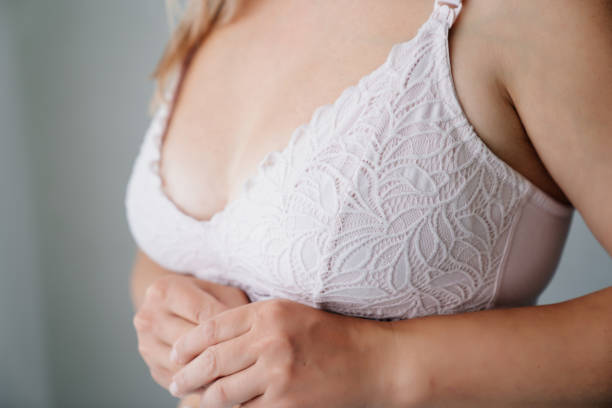
Choosing the right nursing bra is essential for nursing moms. A nursing bra provides easy access to breastfeeding, and it should be comfortable and supportive. Here are some factors to consider when choosing a nursing bra:
Cup Size and Coverage
It is important to choose a nursing bra that fits well. Nursing bras come in different cup sizes, and it is recommended to measure your bust size to ensure a proper fit. A well-fitting nursing bra should provide enough coverage and support for your breasts.
Comfort
Comfort is key when it comes to nursing bras. Look for bras made of soft, breathable fabrics like cotton. Consider wire-free bras and bras with adjustable and wide straps for added comfort. Some nursing bras also come with removable foam cups for added comfort and coverage.
Access
Nursing bras should provide easy access for breastfeeding. Look for bras with flaps or panels that can be easily opened to provide access to your breasts without having to remove your entire bra. Some nursing bras also come with pumping access for added convenience.
Bra Extenders
During pregnancy and postpartum, your rib cage may expand and contract. Bra extenders can help adjust the band size of your nursing bra to ensure a comfortable fit.
Posture
A nursing bra should also provide good posture support. Look for bras with wide back bands and straps to help distribute the weight of your breasts evenly.
Style
Nursing bras come in different styles, from pullover to regular bras. Some nursing bras are even designed to be sexy and stylish. Consider your personal style and needs when choosing a nursing bra.
In summary, choosing the right nursing bra involves considering factors such as cup size, comfort, access, bra extenders, posture, and style. A well-fitting nursing bra can provide comfort and support for nursing moms.
Nursing Bras for Different Times
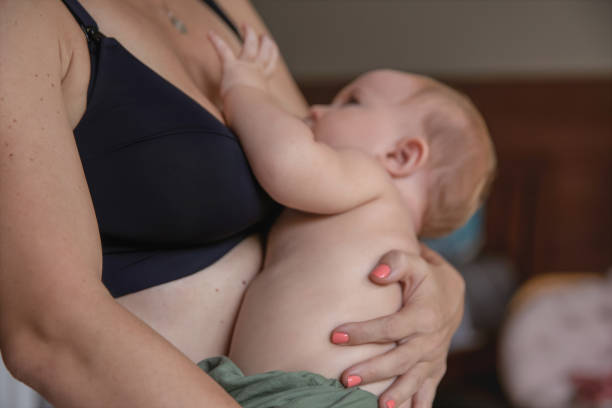
When it comes to nursing bras, it’s important to have a few different options for different times of the day and activities. Here are some suggestions for nursing bras for different times:
Sleep Bras
Sleep bras are a great option for new moms who want to be comfortable while sleeping and breastfeeding. These bras are typically made of soft, stretchy fabric and have no underwire or padding, making them comfortable to wear all night long. Some nursing bras are specifically designed for sleep, known as nursing sleep bras, and they often have easy access for breastfeeding during the night.
Postpartum Bras
Postpartum bras are designed for the first few weeks after giving birth when breasts are still adjusting to milk production. These bras are typically made of soft, breathable fabric and have room for nursing pads to help with leaking. They also often have wider straps and a wider band for extra support.
Exercise Bras
For new moms who want to exercise while breastfeeding, it’s important to have a supportive nursing bra that can handle the extra movement. Look for a bra with a wide band and straps, and one that is made of moisture-wicking fabric to help keep you cool and dry. Some nursing bras are specifically designed for exercise, known as sports nursing bras, and they often have extra support and adjustable straps.
Budget-Friendly Bras
For new moms on a tight budget, there are still plenty of options for nursing bras. Look for bras that are made of stretchy fabric and have easy access for breastfeeding. Some traditional pump bras can also double as nursing bras, making them a budget-friendly option.
Overall, it’s important to have a few different nursing bras for different times and activities. By having a variety of bras, new moms can be comfortable and supported throughout the day and night.
Caring for Your Nursing Bras
Taking care of your nursing bras is essential to ensure maximum comfort and longevity. Proper care can also help prevent clogged or plugged milk ducts, which can lead to discomfort and a decrease in milk supply.
Washing
It is recommended to wash your nursing bras after each use to maintain hygiene and prevent the buildup of bacteria. Handwashing is the best method, but if you choose to use a washing machine, make sure to use a delicate cycle and a lingerie bag to prevent damage.
Avoid using fabric softeners or bleach, as they can damage the fabric and irritate nipples. Instead, use a mild detergent and rinse thoroughly to remove any soap residue.
Clogged Milk Ducts
Clogged milk ducts can occur when milk is not properly drained from the breast, leading to discomfort and a decrease in milk supply. To prevent clogged milk ducts, make sure to wear a well-fitting nursing bra that provides proper support and does not compress the breasts.
Nipples
Nursing bras should be comfortable and provide proper support without irritating the nipples. Look for bras with soft, breathable fabric and avoid bras with seams or stitching that can rub against the nipples.
Sleep Bras
Sleep bras are designed to provide comfort and support while sleeping. They are typically made of soft, stretchy fabric and do not have underwire or padding. Sleep bras can help prevent discomfort and leakage during the night.
In conclusion, proper care and maintenance of nursing bras are essential for maximum comfort and longevity. By following these tips, you can ensure that your nursing bras provide the support and comfort you need while nursing your baby.
Potential Issues and Solutions
While nursing bras can be incredibly helpful for breastfeeding mothers, they can also present a few potential issues. Here are some of the most common problems that women may encounter when using nursing bras and some potential solutions to consider:
Mastitis
Mastitis is a painful infection of the breast tissue that can occur when milk ducts become blocked. Nursing bras can sometimes contribute to this problem by putting pressure on the breasts and preventing milk from flowing freely. To prevent mastitis, it’s important to choose nursing bras that fit well and don’t put too much pressure on the breasts. Women who are prone to mastitis may also want to consider using breast pads to absorb excess milk and prevent engorgement.
Ease of Use
Some nursing bras can be difficult to use, especially for women who are new to breastfeeding. It can be hard to open and close the bras with one hand while holding a baby in the other. To make things easier, look for nursing bras that are designed to be easy to use. Some bras have snaps or hooks that can be opened with one hand, while others have front closures that are easy to maneuver.
Pre-Pregnancy Bras
Women who have larger breasts may find it difficult to find nursing bras that fit well and provide enough support. In some cases, it may be helpful to wear pre-pregnancy bras that are designed to provide more support. However, it’s important to choose bras that are comfortable and don’t put too much pressure on the breasts.
Breast Size
Breast size can change significantly during pregnancy and breastfeeding, which can make it challenging to find nursing bras that fit well. To ensure a good fit, it’s important to measure the breasts regularly and choose bras that are designed to accommodate changes in breast size. Some nursing bras are adjustable and can be tightened or loosened as needed.
Cost
Nursing bras can be expensive, especially if women need multiple bras to get through the day. However, it’s important to invest in high-quality bras that provide adequate support and comfort. Some women may be able to save money by purchasing bras in bulk or looking for sales and discounts. It’s also important to remember that investing in good nursing bras can help prevent problems like mastitis and make breastfeeding more comfortable and convenient overall.
Conclusion
In conclusion, when it comes to nursing bras, it is important to have enough to ensure comfort and convenience. The number of nursing bras a person needs depends on their individual needs and preferences.
According to the search results, it is recommended to have at least two nursing bras to change during the beginning of breastfeeding, and to change to a larger size in the last trimester if necessary. However, it is also suggested to have four nursing bras on hand, including one for all-day comfort and nursing access, one for washing, one for sleeping, and one to keep for unexpected situations.
It is important to note that the quality of nursing bras is just as important as the quantity. Nursing bras should be comfortable, supportive, and allow for easy access during breastfeeding. It is recommended to invest in high-quality nursing bras that fit well and provide the necessary support.
Overall, having enough nursing bras is crucial for breastfeeding mothers. By having a few comfortable and supportive nursing bras on hand, mothers can ensure that they are comfortable and prepared for any situation that may arise during breastfeeding.
Frequently Asked Questions
How many nursing bras should I buy?
It is recommended to have at least three nursing bras to start with. This will allow you to rotate them and have a clean one available when needed. However, the number of nursing bras you need may depend on your personal preference and how often you plan to wash them.
How many nursing bras do I need for the hospital?
It is recommended to have at least two nursing bras for the hospital. One to wear and one as a backup in case of any leaks or accidents.
How many maternity bras should I have?
You will likely need at least three maternity bras during pregnancy. It is important to choose a bra that fits well and provides enough support for your changing body.
What is the benefit of wearing a nursing bra?
Nursing bras provide easy access for breastfeeding and can help prevent discomfort and engorgement. They are designed to be comfortable and supportive, with features such as adjustable straps and removable pads.
Can I wear a sports bra during pregnancy?
Yes, you can wear a sports bra during pregnancy. However, it is important to choose one that provides enough support and does not compress your breasts too much.
When should I stop wearing wired bras during pregnancy?
It is recommended to stop wearing wired bras during pregnancy, as they can put pressure on your breasts and cause discomfort. It is best to switch to a non-wired bra or a maternity bra for added support and comfort.
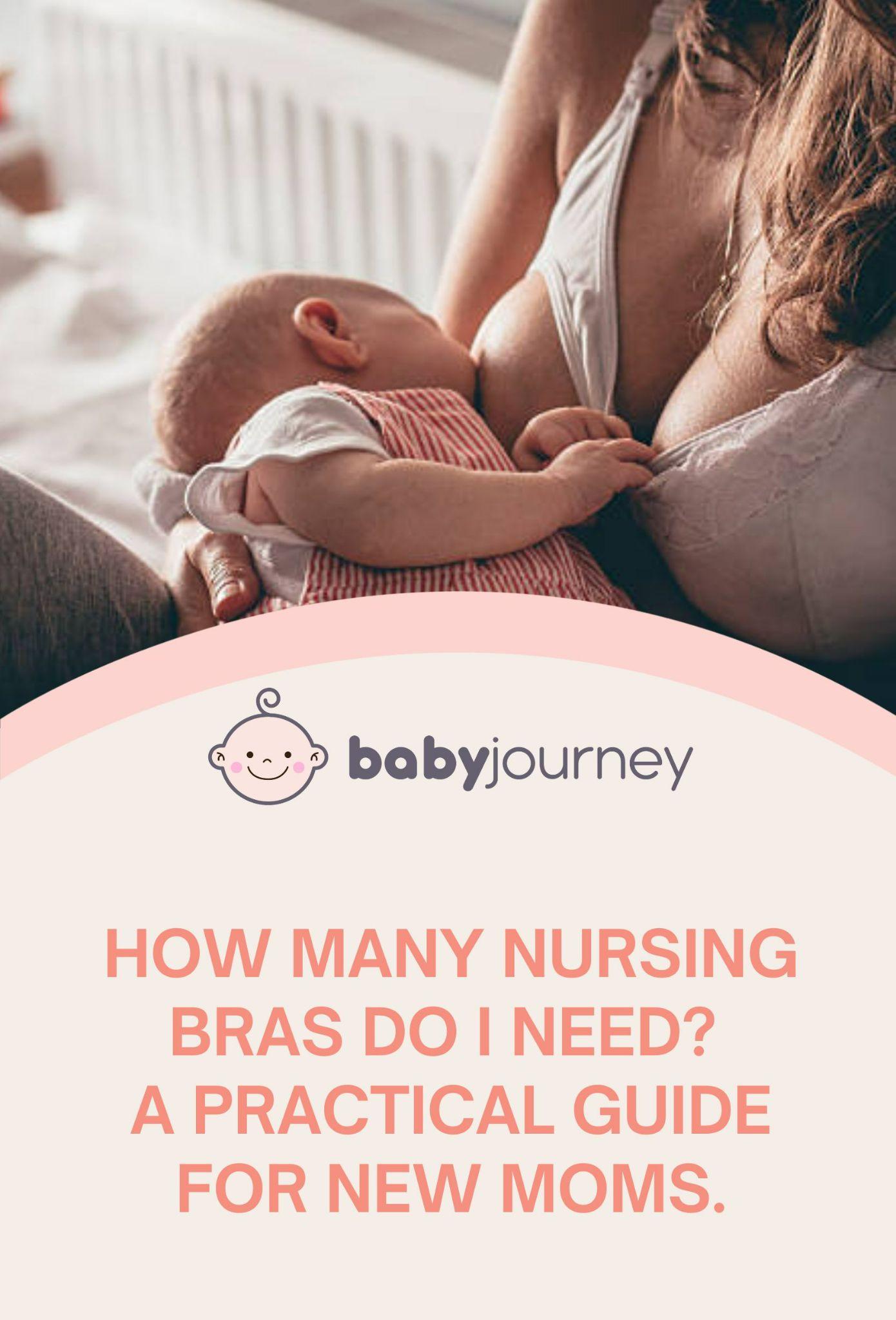

 PARENTING TIPS
PARENTING TIPS







 PREGNANCY
PREGNANCY








 BABY CARE
BABY CARE








 TODDLERS
TODDLERS








 TEENS
TEENS

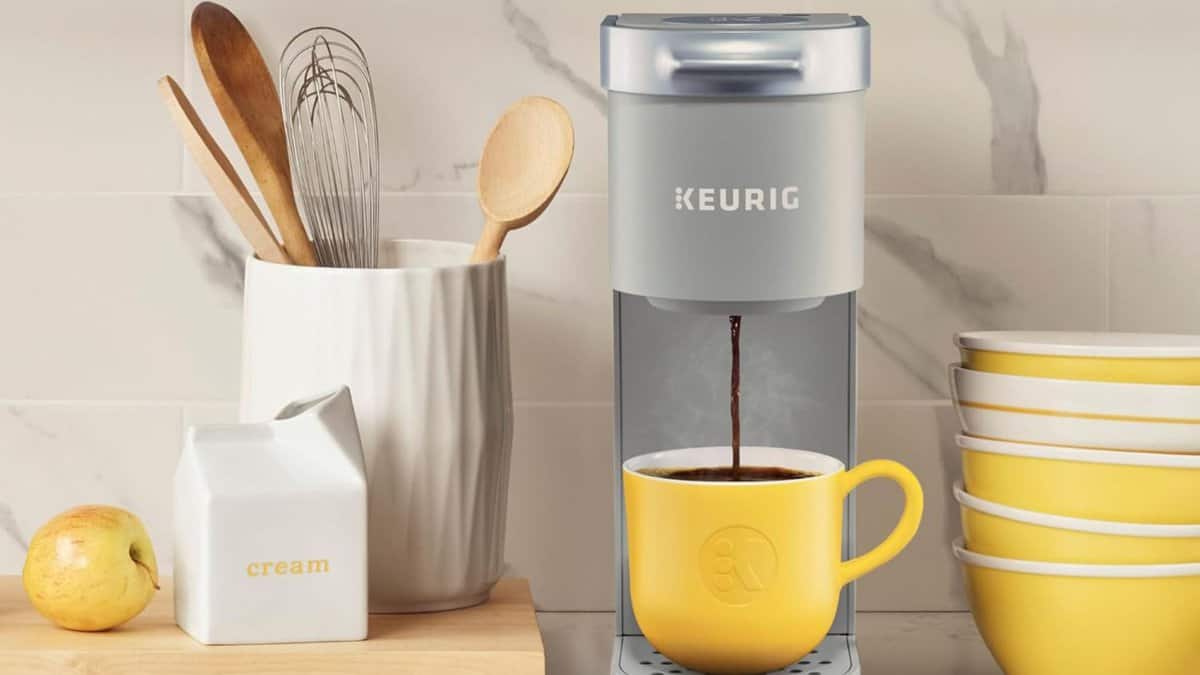
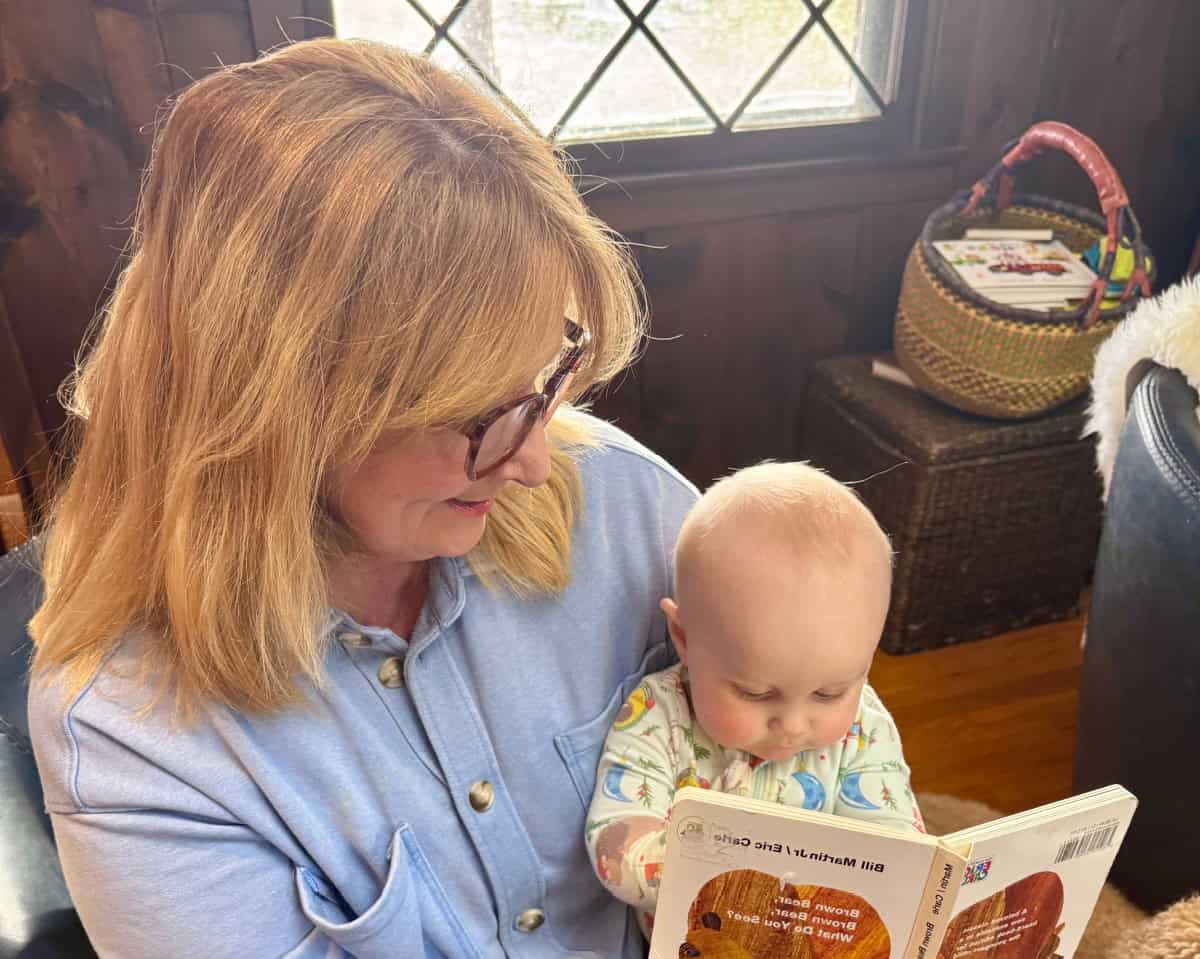





 HEALTH CARE
HEALTH CARE




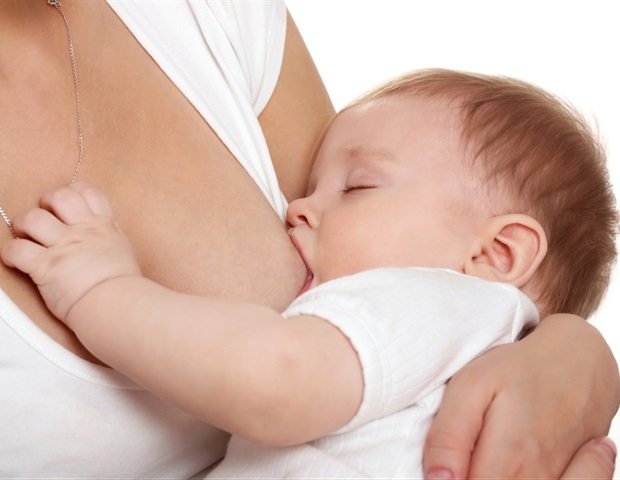

 ACTIVITIES & CRAFTS
ACTIVITIES & CRAFTS








 CONTACT
CONTACT ABOUT
ABOUT